South african plants has stunning wildlife, amazing landscapes, and vibrant culture. Are you keen on bringing some South African beauty into your own space?!
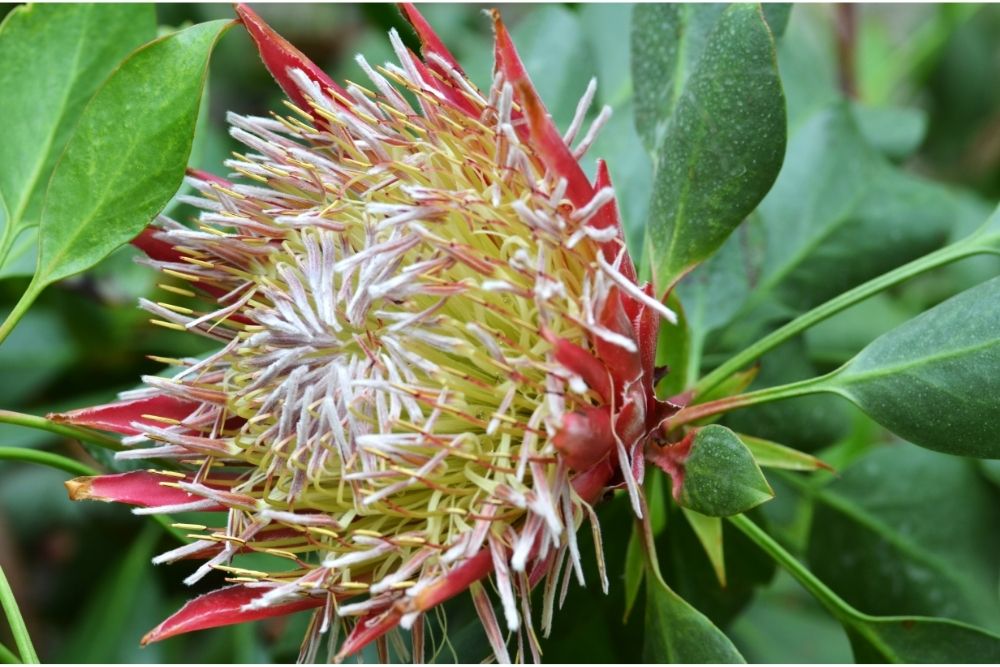
If so, you definitely can! The natural world is packed with joy that can enrich your life and boost your loved one’s mood.
When looking for plants to use from this diverse country, you might find that you’re faced with many choices. Unfortunately, this can mean that you find yourself feeling overwhelmed, which can leave you swamped with all the options.
Even worse, if you aren’t careful, you can end up with a mismatched landscaping scheme with separate elements that don’t work together.
To stop you from having a strange-looking gardening space, it’s vital that you thoroughly research different South African plants.
Doing this can be stressful and confusing in itself, so we’ve done the leg work for you! We’ve looked through loads of information on this country’s beautiful plant species.
The following article includes photos, factual content, and entertaining details about South African plants.
We’ve written about different species to suit gardeners with other skillets, gardening spaces, and wishes. This means that the article below will be helpful to you even if you’ve never cared for a plant!
So, without further ado, we recommend you read on!
1. Paintbrush Lily (Scadoxus Puniceus/Haemanthus)

The Paintbrush Lily (Scadoxus puniceus/ Haemanthus) has eye-catching blossoms with spiky yellow centers hugged by maroon and frilly petals.
These stunning flowers are placed atop thick light green stems, which is easy to look after as it can withstand severe frosts and doesn’t need much nurturing.
2. Red Hot Pokers (Khiphofia)
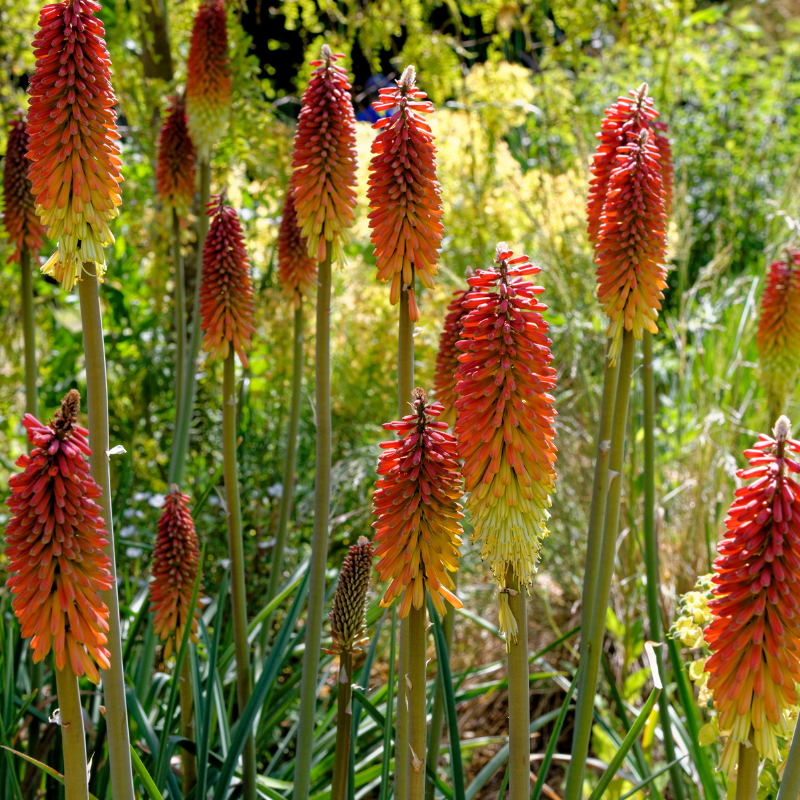
The perennial Red hot pokers (Kniphofia) have red, yellow, and orange collections of trumpeting plants, which look super bold and bring structure to any flower bed.
We recommend making sure you can put them in a fully sunny spot, give them a little manure, and feed them with plant food every once in a while.
3. Aloes
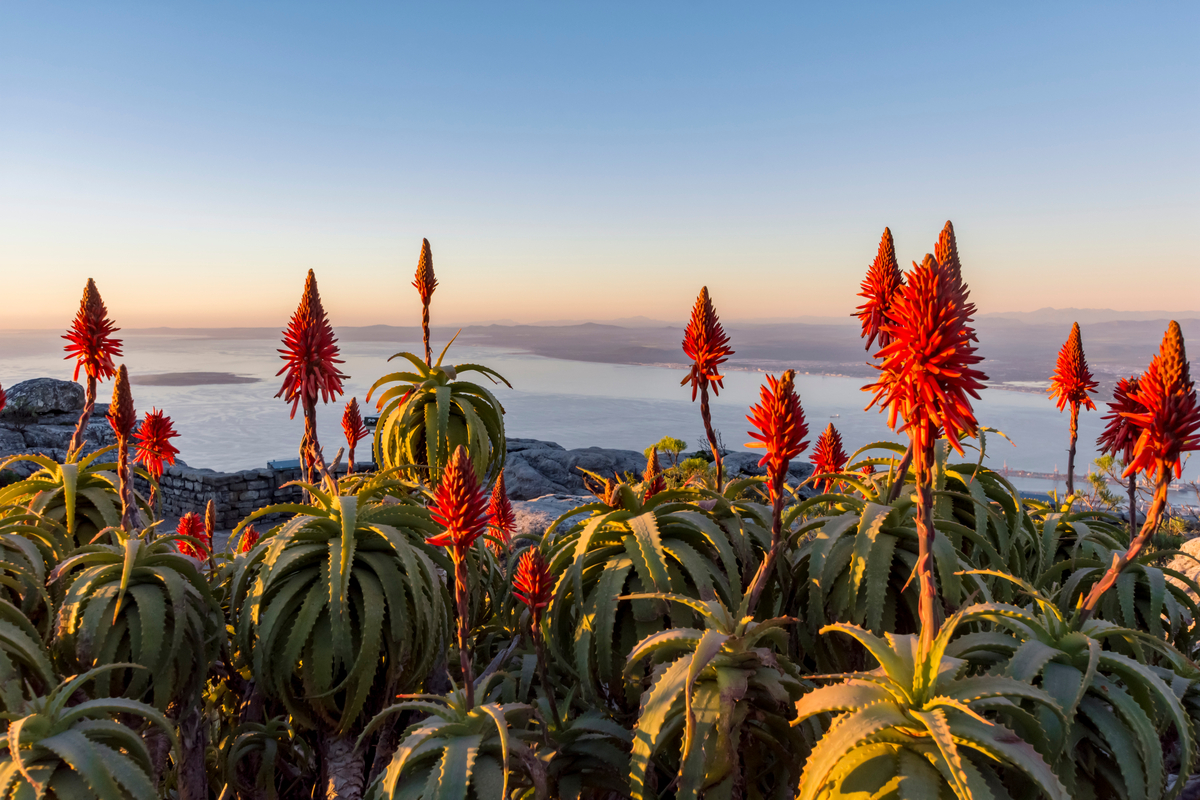
Aloes are renowned for being super resilient and versatile; they can survive for ages without water and are nurtured as houseplants or outdoor species.
However, to grow these plants to their full height at 6 meters tall, these plants require you to give them enough room and check for mealybugs that are attracted to them.
4. Clivias

Clivias come in many different colors and are a gorgeous shrub that is a brilliant space-filler for a garden that is in a warm climate.
However, if you don’t have a large landscape, we recommend that you put it in a pot as these bulbs can thrive in small spaces, drought conditions, or wet soil.
5. Protea
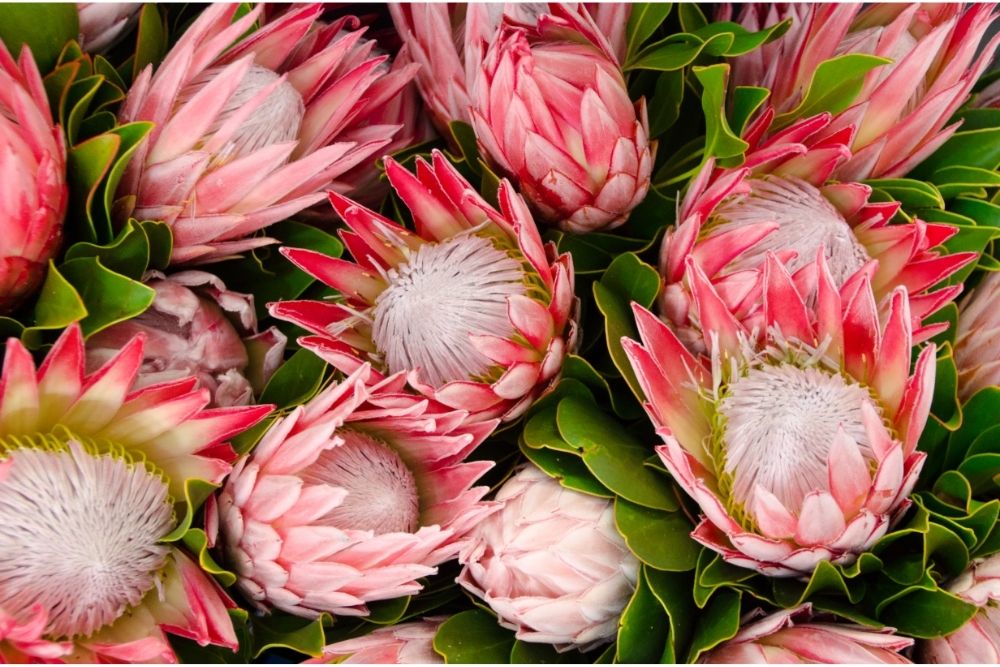
The protea plant has light green, pink and purple petals, which have a rounded shape and look beautiful in cut flower arrangements in vases.
To ensure you can enjoy this species for many years to come, don’t put it in a location that’s prone to getting frost and ensure the soil is slightly acidic.
6. Agapanthus

If you’ve been searching for a memorable and eye-catching plant that will produce blooms in calm tones, we advise you to consider purchasing agapanthus.
The blossoms come in white, blue, black, purple, and violet varieties, which reach their full potential when they can grow in warm spots without being exposed to the cold.
7. Plectranthus ‘Mona Lavender
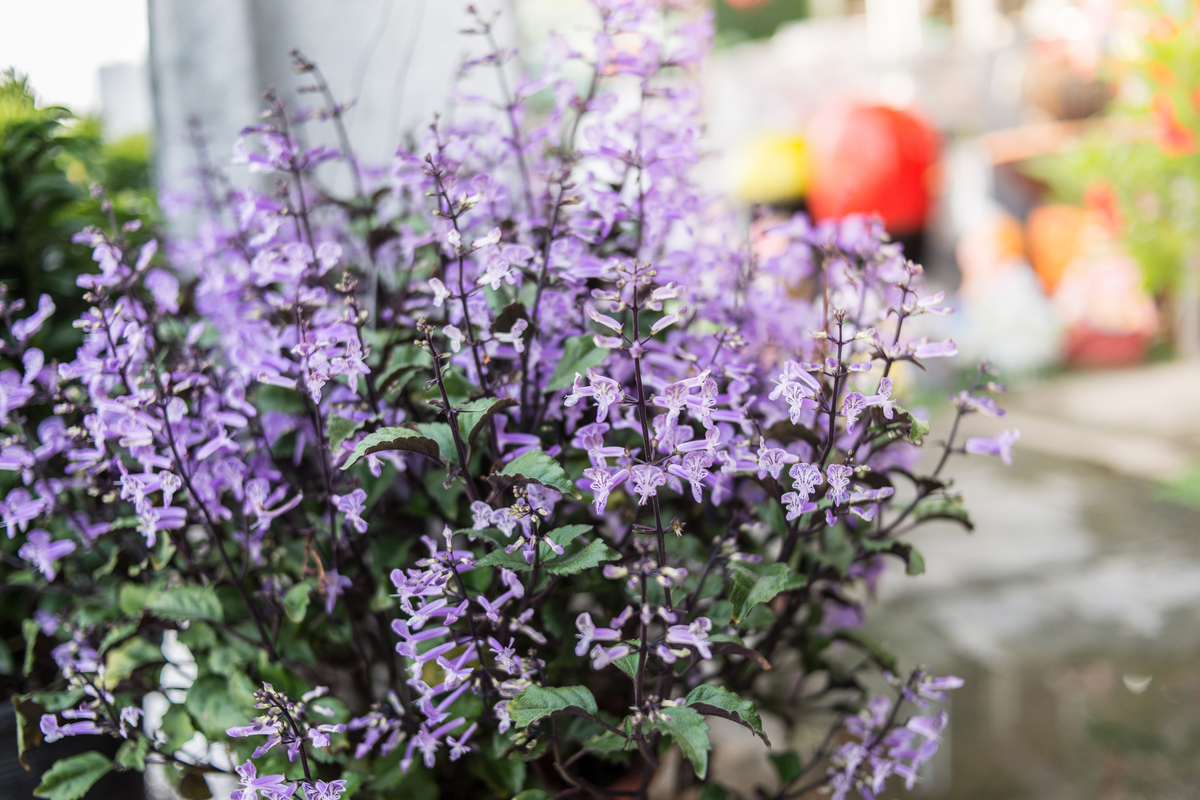
The Plectranthus ‘Mona Lavender’ has trumpet-shaped violet flowers surrounding a brown stem above light green heart-shaped foliage.
Native to South Africa, this plant has a spiky silhouette, ideal for adding a ground cover to a bare earth spot in a landscape.
8. Crocosmia
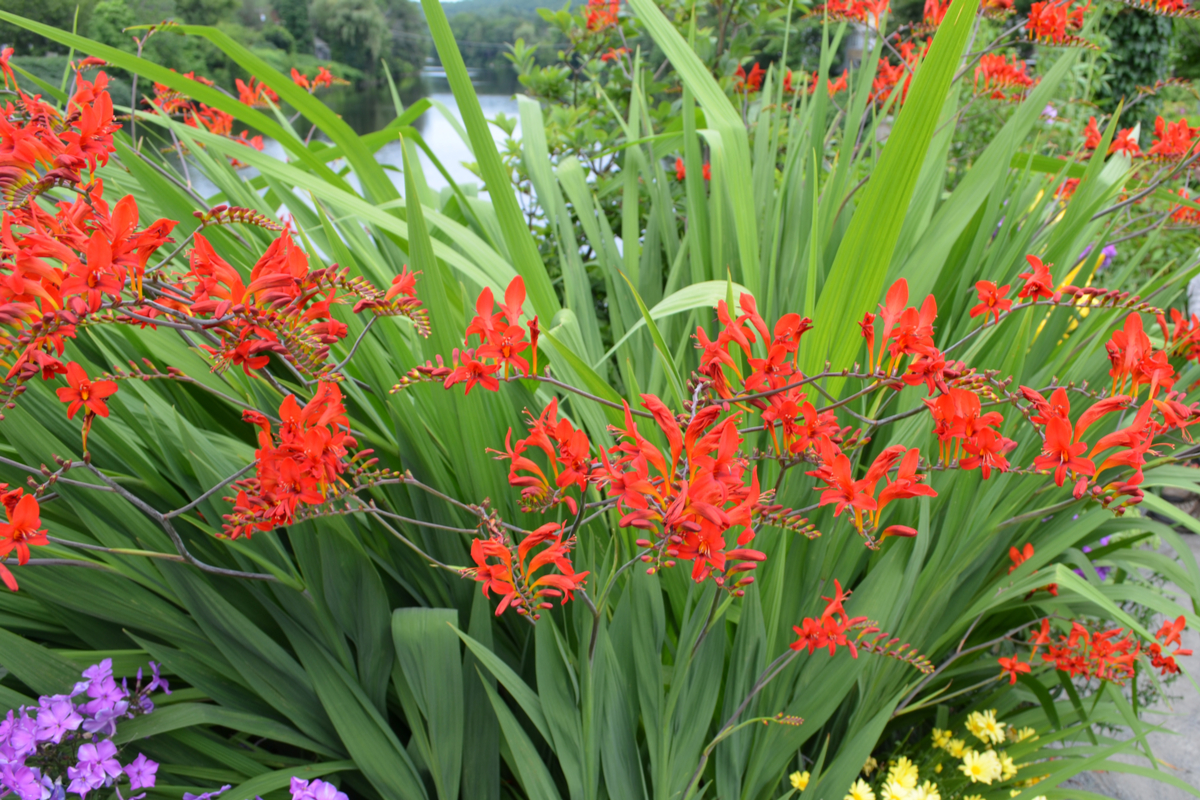
The Crocosmia has light green foliage and stems, producing bright orange flowers in a fanning formation that reaches the sun.
These blossoms aren’t just attractive to humans, hummingbirds love them, and insects pollinate the Crocosmia, which helps the surrounding environment.
9. Nemesia
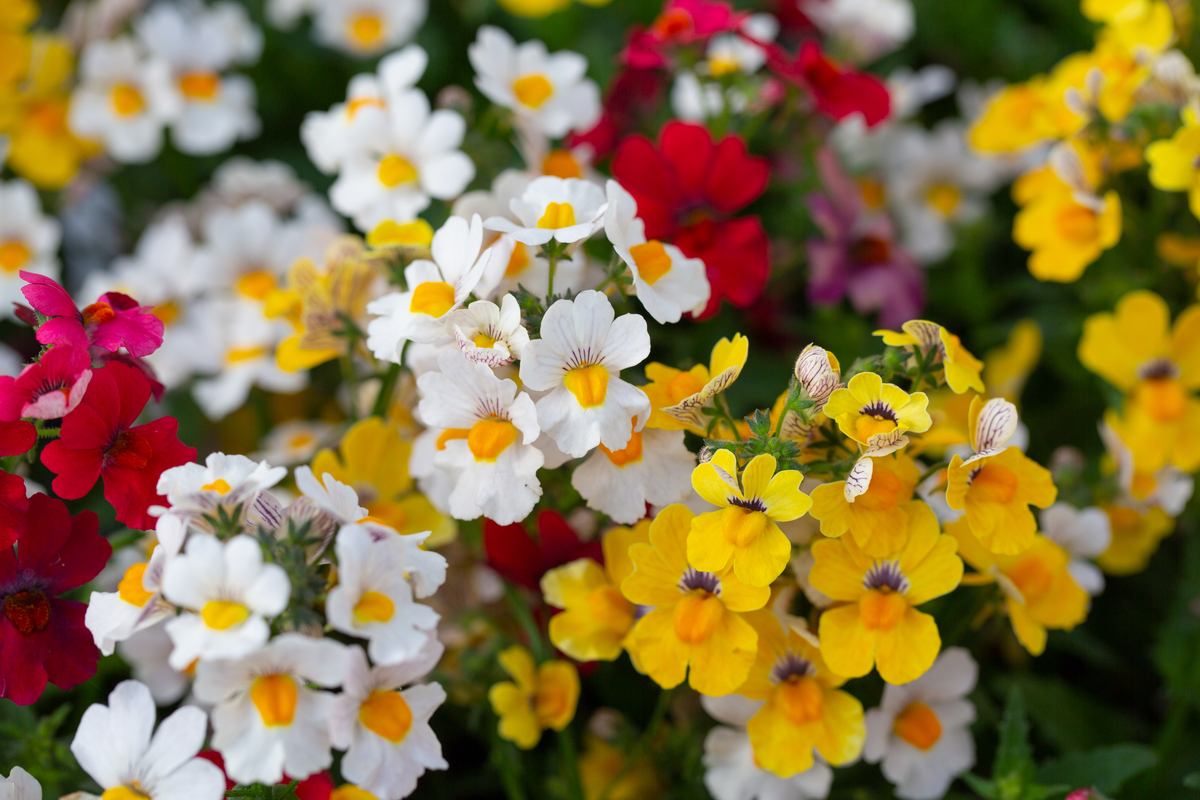
To care for the Nemesia and allow its snow-white plants to shine, we advise you to keep them in a warm climate and that they have access to UV Rays aplenty.
This species is beloved by florists because the tiny blossoms add delicacy to any bridal bouquet, flower arrangement, and vases.
10. Bulbinella
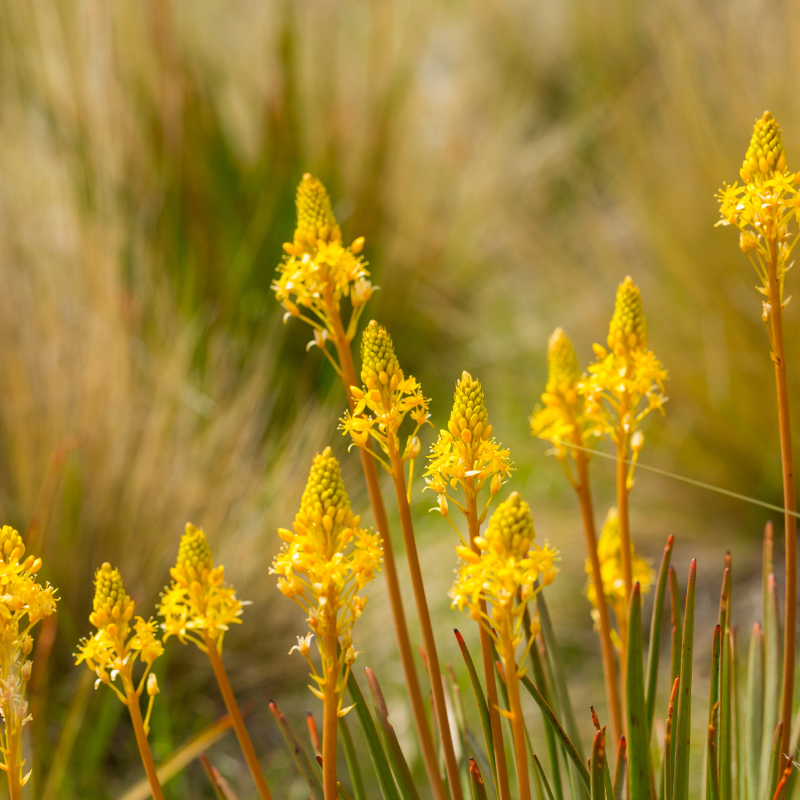
The succulent Bulbinella has several different benefits, not including looking gorgeous, which include being used by holistic healers to treat cold sores.
You can put it indoors if you don’t have an outdoor space or leave it in a rugged area to nurture this species.
11. Pelargonium (Kusmalva)
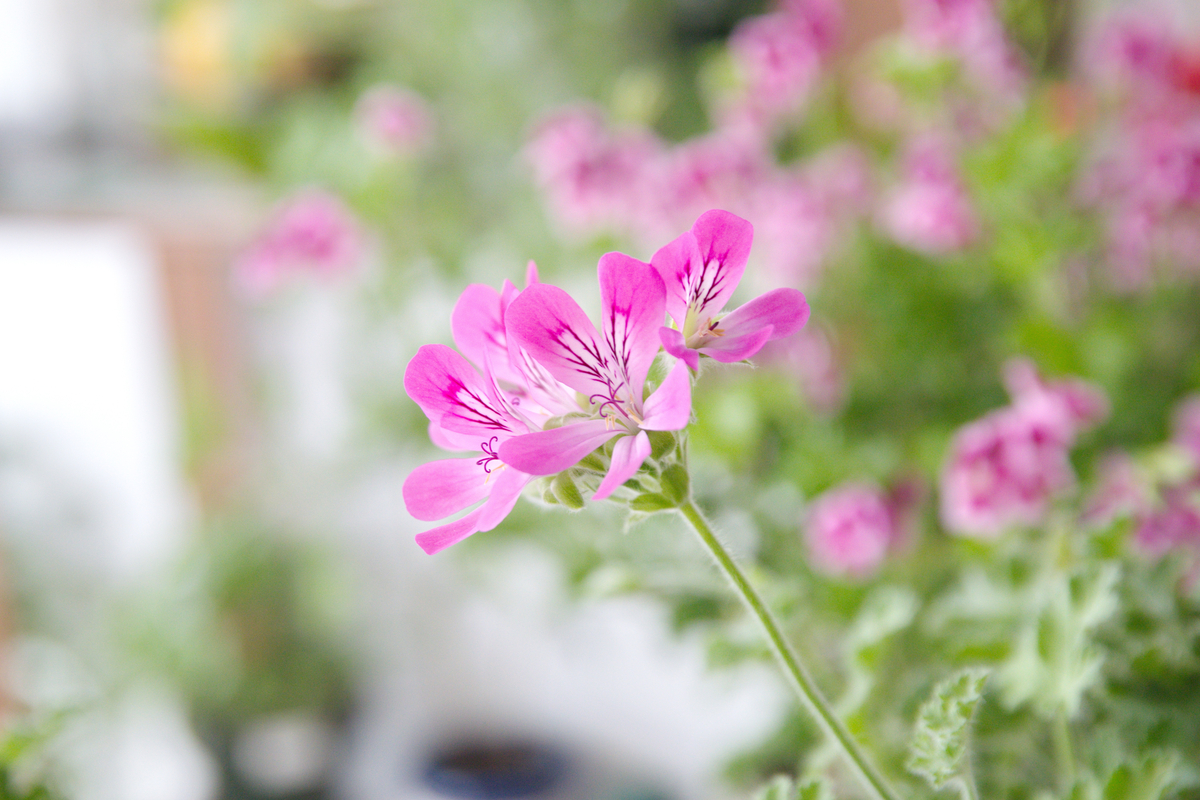
The Pelargonium (kusmalva) has bright pink flowers with a sweet rosy fragrance, meaning it’s beloved by those looking for window plant pots and containers on patios.
The colorful green foliage is also versatile because it can be used to create delicious cakes, bathe in, and as a crushed-up addition to food.
RELATED: Asili Ni Nzuri! 10 Different Types Of African Trees/a>
12. Pelargonium Culallatum (Wild Malva)
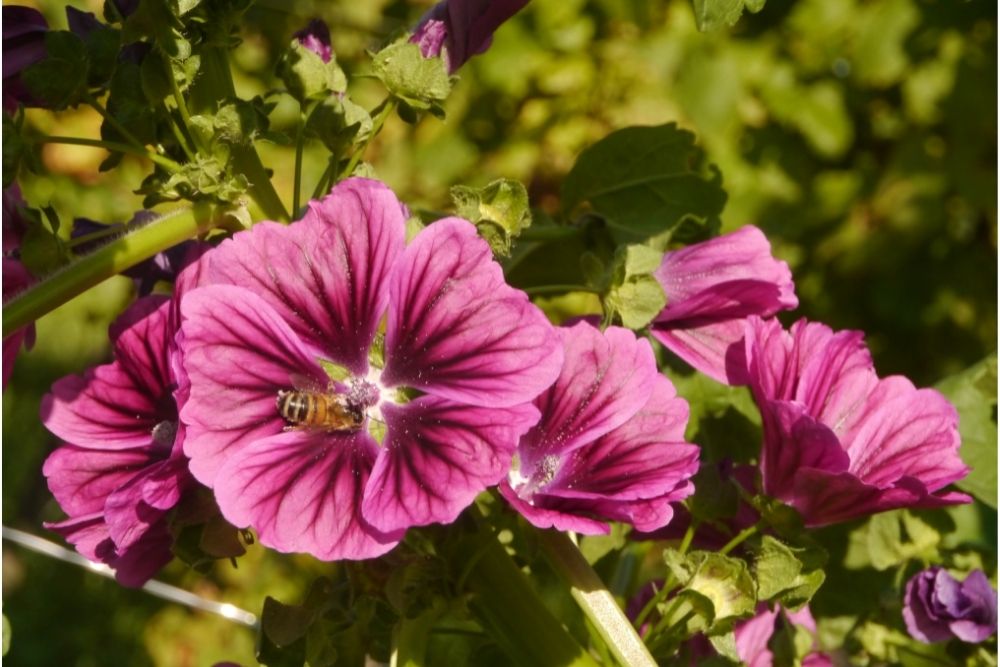
The Pelargonium culallatum (wild Malva) can grow to 1 meter tall, which has frilly foliage that sits in between bright, fragrant pink flowers. These hot pink blossoms can be used by bakers to decorate the tops of cakes, pastries, and wedding food.
13. Coleonema Pulchellum (Confetti Bush)
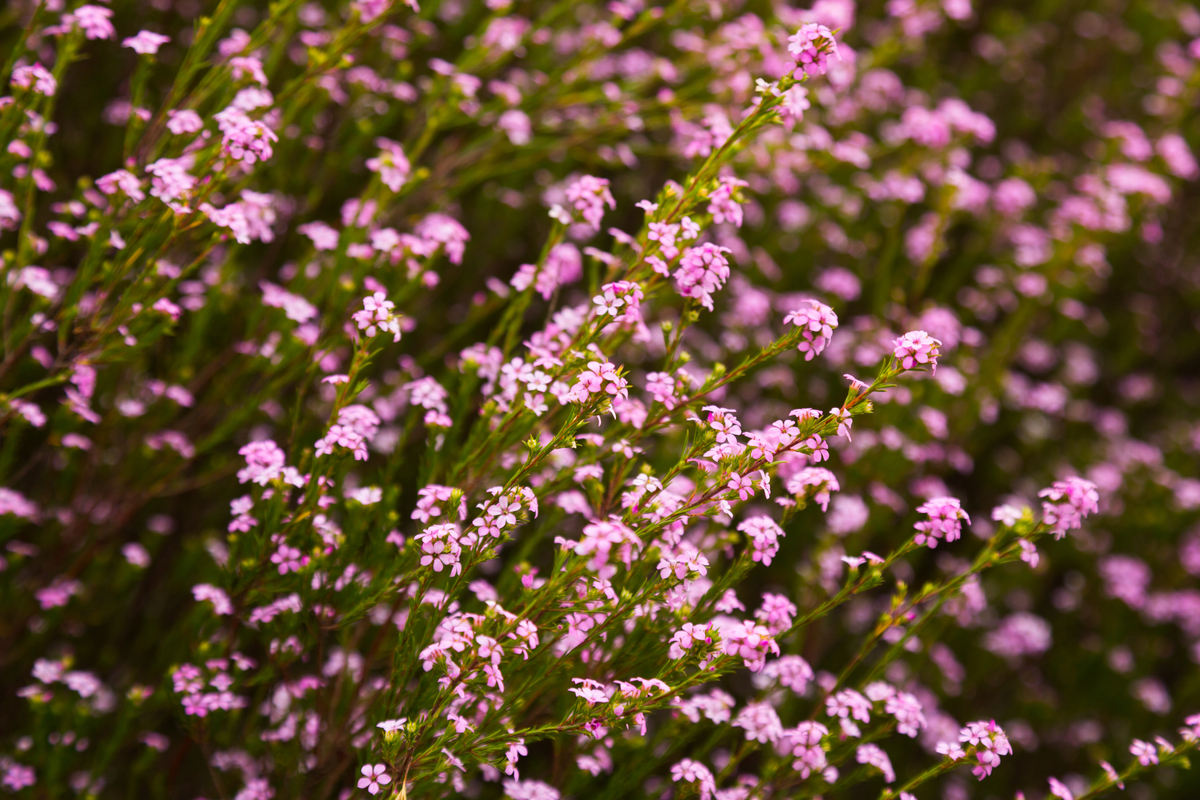
This plant is a scented herb with many uses when this shrub is planted in well-draining earth, manure, and super bright sunlight.
The Coleonema pulchellum (confetti bush) adds flavor to different meals as a structured plant and covers a bare garden patch.
14. Oxalis Pes-Caprae (Wild Sorrel)
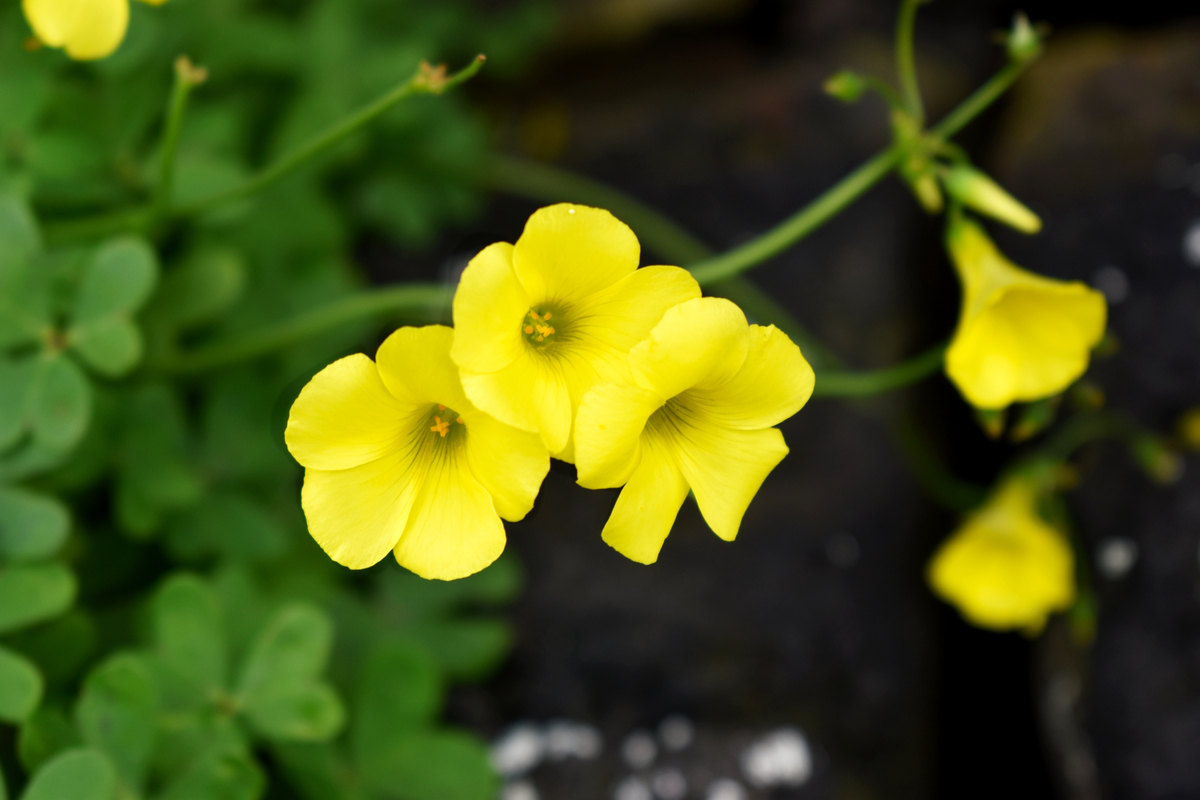
The Oxalis pes-caprae (wild sorrel) is perfect for those who love bright yellow spring blossoms because its trumpeting shape reflects the sunlight between thick foliage.
This plant thrives when it’s given ample manure, UV Rays, and access to a climate that rains a lot.
15. Artemesia Afra (African Wormwood)
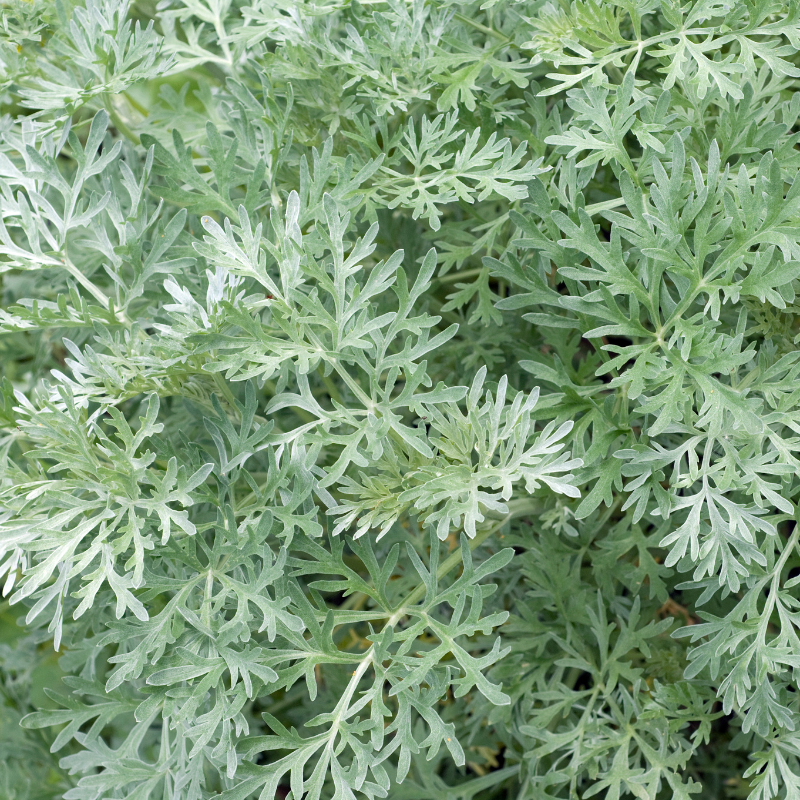
The Artemesia afra (African wormwood) is a medicinal plant that can be used to treat different ailments from colds, coughs, pneumonia, headaches, asthma, fever, and sore throats.
We recommend adding leaves to cocktails, herbal teas, and baked goods to make the most out of this plant.
16. Carissa Macrocarpa (Num-Num)
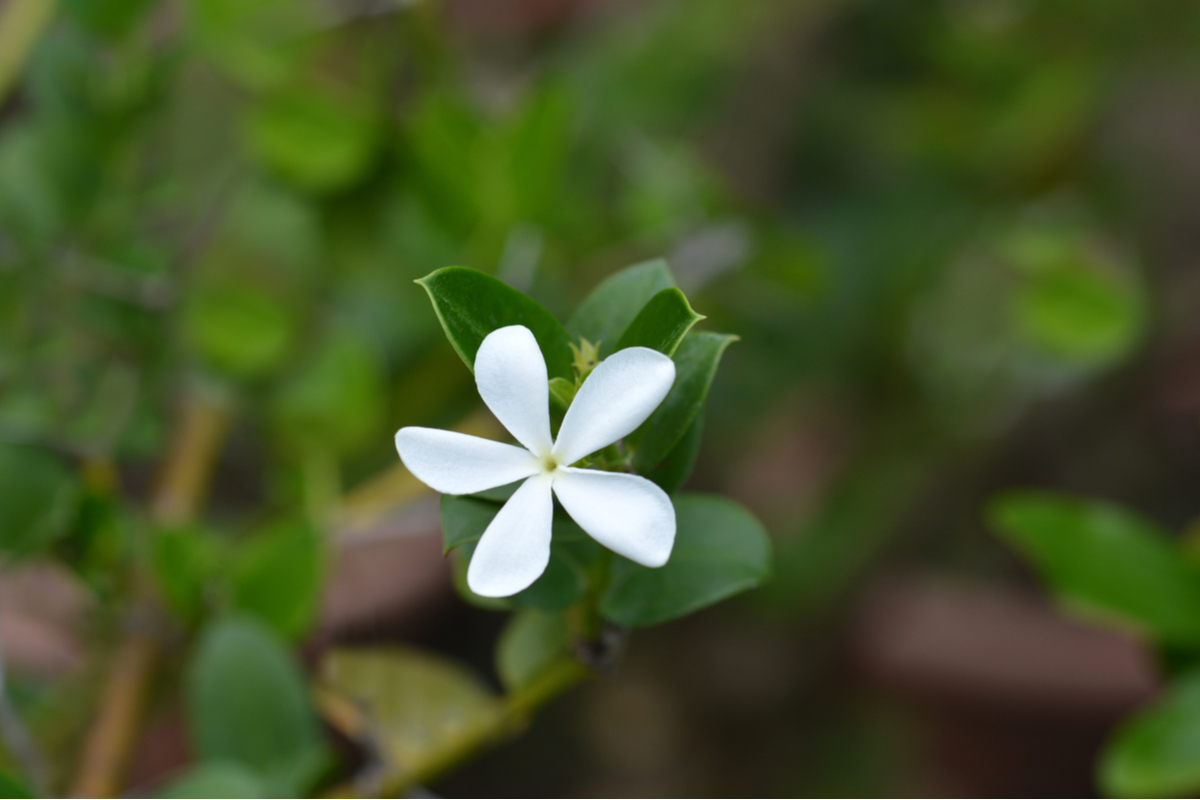
The Carissa macrocarpa (num-num) produces delicious red berries packed with vitamin C, which are used to make jams that can be added to different dishes.
To care for the Carissa macrocarpa, make sure it’s in a place that has soil with minerals aplenty and access to sun rays.
17. Tulbachia Violacea (Wild Garlic)
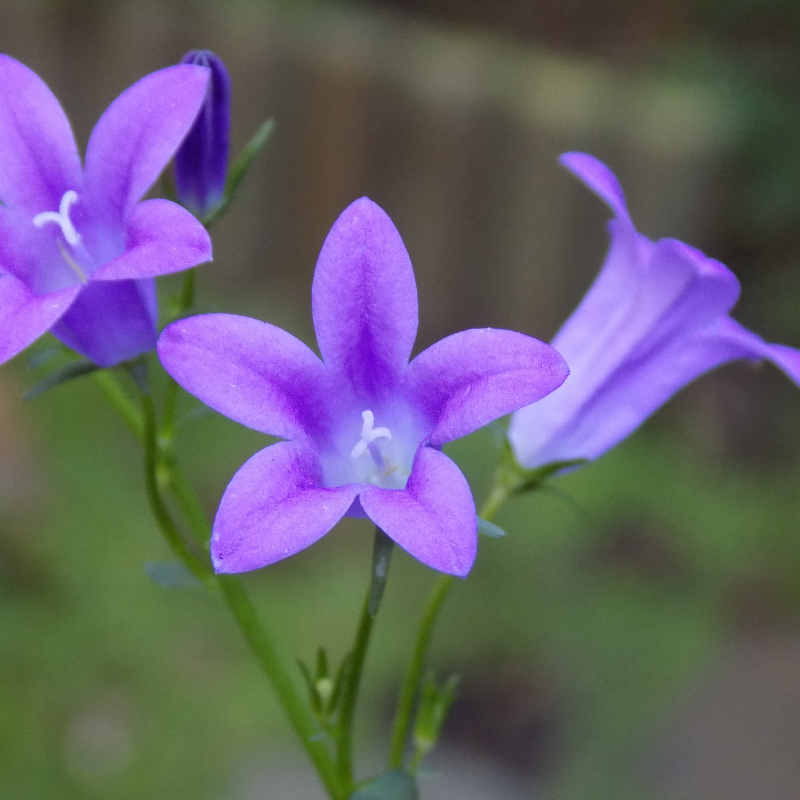
Renowned for being super fragrant, the Tulbachia violacea (wild garlic) produces scented flowers during spring, used in soups to add flavor.
If you’re not a fan of liquidized vegetables, you can also use the wild garlic plant in salad arrangements, hummus, and roast meals.
18. Jasminum Multipartitum (Many-Petalled Jasmine)
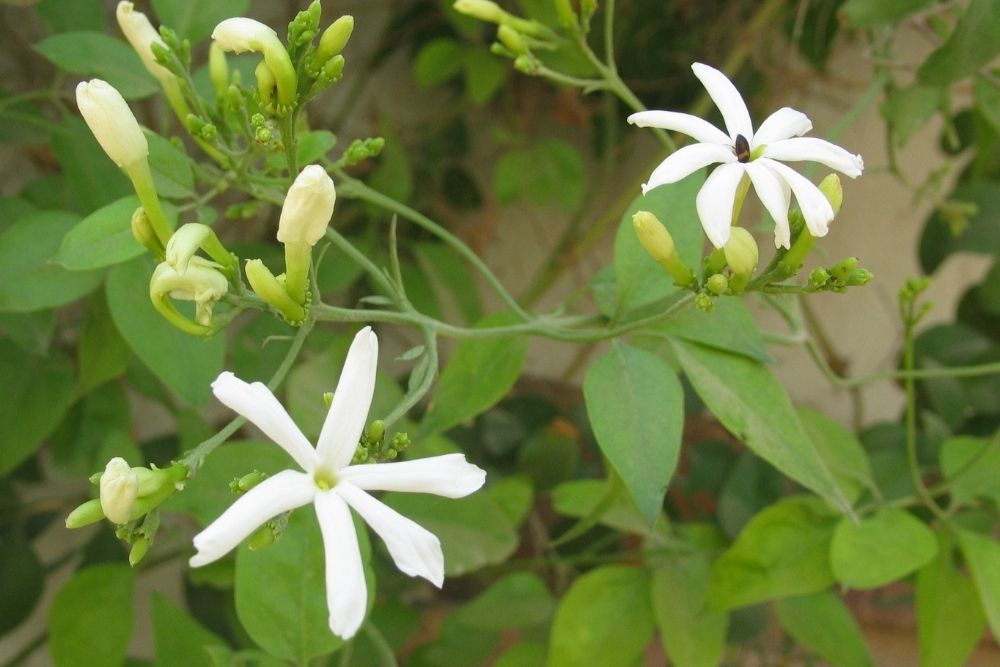
The Jasminum multipartitum (many-petalled jasmine) is a shrub with delicate light pink, and white flowers that are color pops in between shiny green foliage.
The jasmine blossoms produce sweet scents, often used to create perfumes, essential oils, room fragrances, and desserts.
19. Carpobrotus Edulis (Sour Figs)
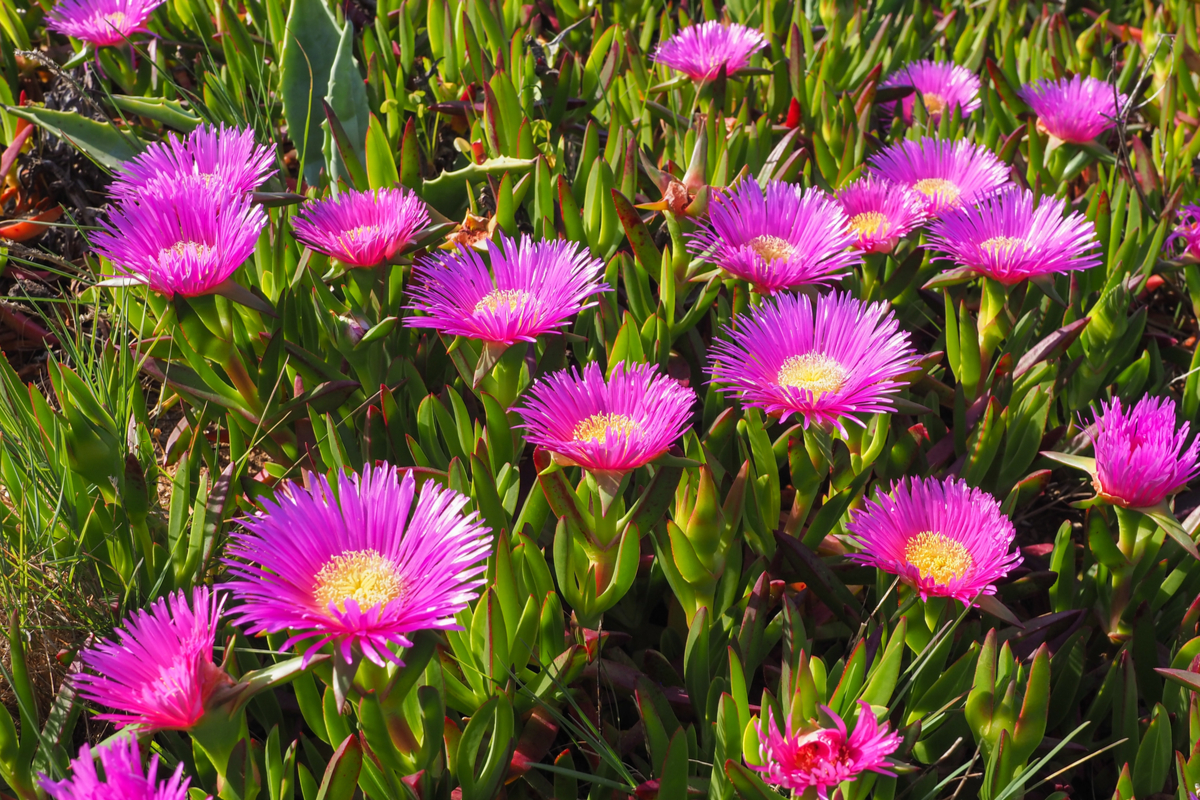
This plant is beloved for producing puffy and spiky green leaves that make a tremendous succulent ground cover to fill a dull landscaping section.
And, you can even eat this foliage as it has a sweet fruit, which means you can pop them into chutneys, jam, preserves, and other condiments.
20. Mentha Longifolia (Balderjan)
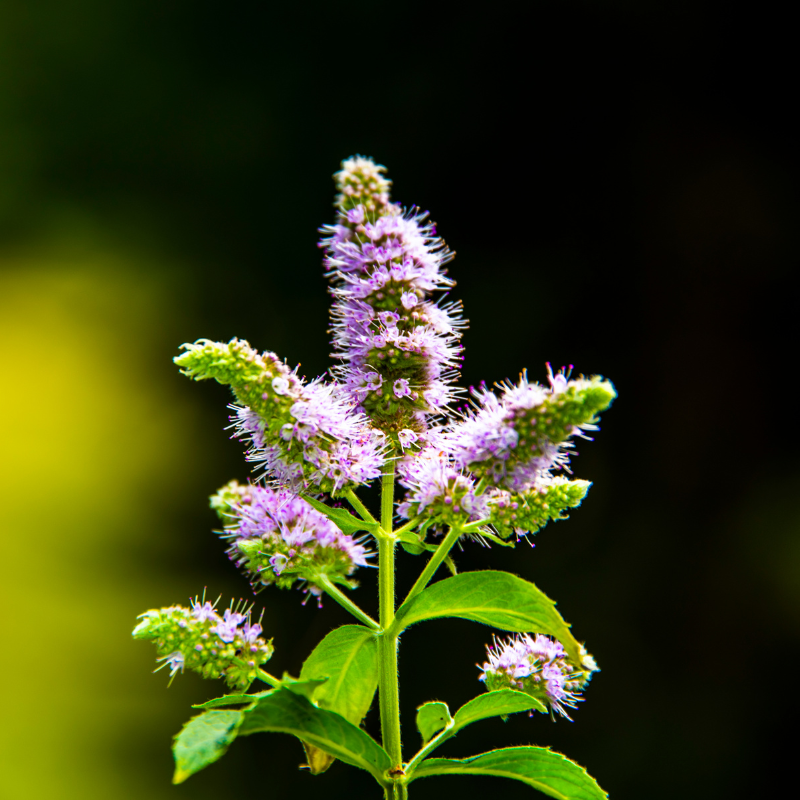
The Mentha longifolia (balderjan) is a popular plant with a minty flavor, an excellent addition to cakes, bakes, jams, salads, and as a garnish atop fancy meals.
In addition to these delicious uses, you can transform this plant into a heating element that can cure stomach issues and solve your anxiety.
21. Salvia Africana Lutea (Aromatic Sage)
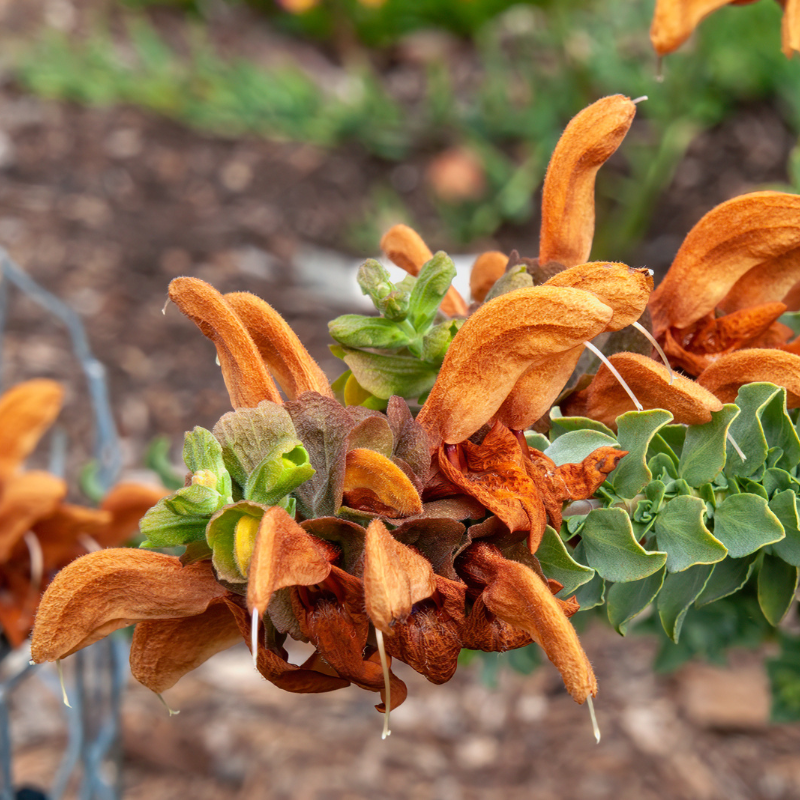
The Salvia Africana lutea (aromatic sage) is another edible South African plant popular amongst many chefs in this region for elevating pasta, soup, roast, stew, and chicken dishes.
And it’s not just delicious food; this species is a resilient shrub that can survive in sandy areas, which brightens up where they’re planted with their orange flowers.
22. Agathosma Apiclata (Garlic Buchu)
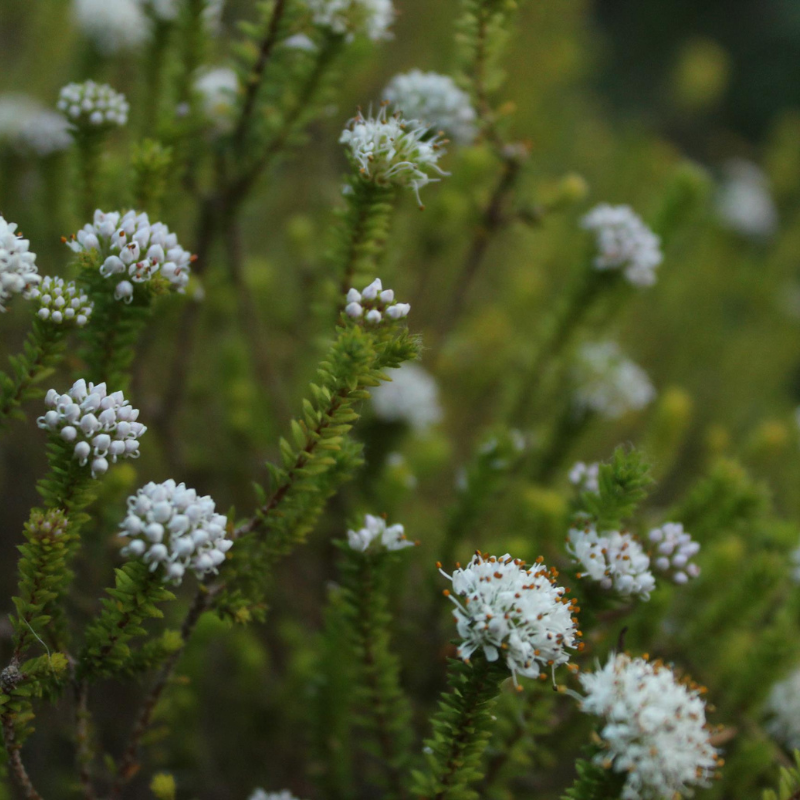
This plant smells garlicky, which can be added to oils, vinegar, essential oils, and delicious dishes. Like many plants from South Africa, Agathosma apiclata (garlic buchu) is super hardy, meaning it can thrive in well-draining sandy soil.
23. Barberton Daisy/Transvaal Daisy (Gerbera Jamesonii)
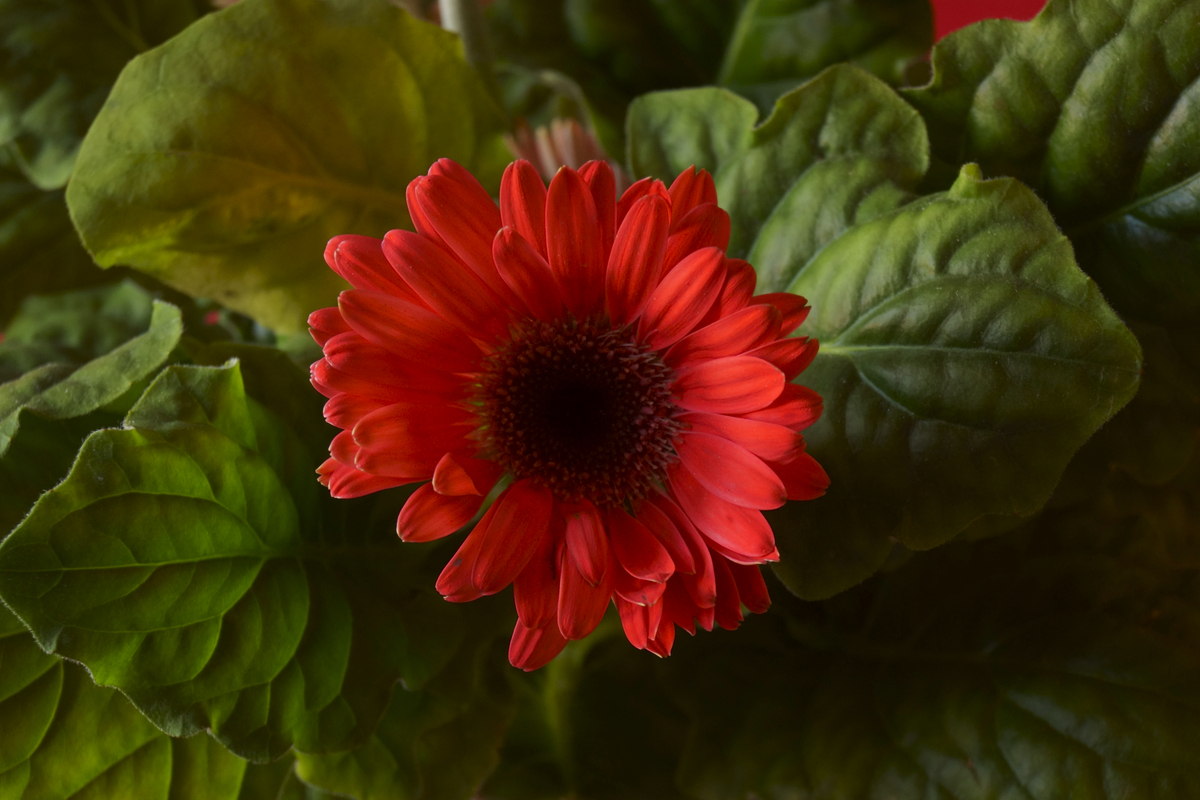
The Barberton Daisy/ Transvaal Daisy (Gerbera jamesonii) is perfect for those that love sunny yellow flowers because these golden blossoms fan out towards the sunlight.
To attract pollinators to your garden, we recommend planting this daisy if you have a suitable environment because this one will do just that.
24. Candelabra Flower
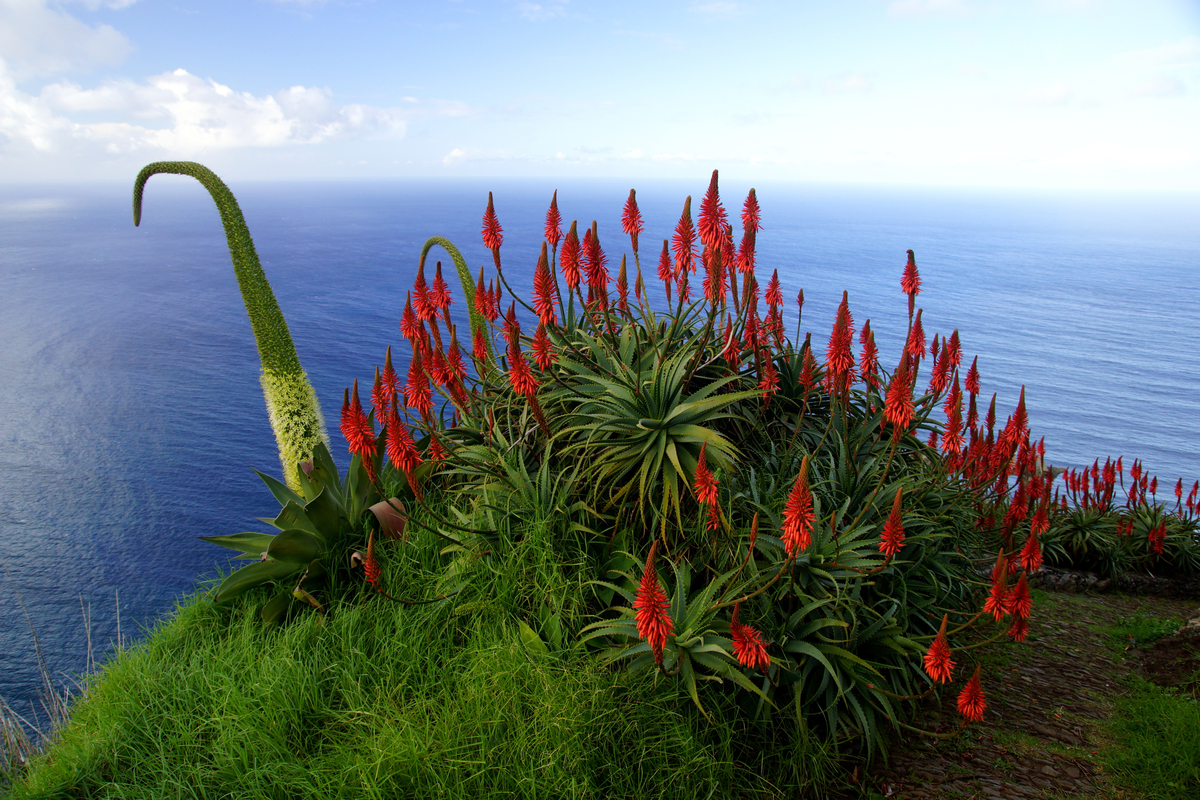
As the name suggests, the Candelabra Flower fans out like a bright light in an elegant interior, which grows light pink tiny blossoms. This is a perennial species and can grow to 500 millimeters tall, which means it can fill up a little flower bed.
Conclusion
And there you have it! We’ve discussed 24 different South African plant species, which will thrive in many wildly different environments so that you can enjoy them all over the world.
We love that there are gorgeous perennials, shrubs, houseplants, trees, and fruits. So you can have edible plants that enrich your meals, desserts and add fragrance to your home.
Editor’s Recommendations
10 Awesome Trees That Start With O (Including Pictures)







